|
I found that it was often
double:
This Ancient Egyptian drawing does not represent a real animal, but a visual charade meaning "double serpent."
Here, too, the image suggests that the primordial divinity is double, both serpent and "non-serpent."
Insisting that it was more appropriate to discuss these matters with images,1 he made several sketches of the cosmic anaconda Ronín, including this one:
It would be possible to give many examples of double serpents of cosmic origin associated with the creation of life on earth, but it is important to avoid too strict an interpretation of these images, which can have several meanings at once.
For instance, the wings of
the serpent can signify both a paradoxical nature and a real ability
to fly, in this case in the cosmos.
Sometimes the winged serpent takes the form of a dragon, the mythical and double animal par excellence, which lives in the water and spits fire.
According to the Dictionary of symbols, the dragon represents,
Its androgynous nature is symbolized most clearly by the Ouroboros, the serpent-dragon, which "incarnates sexual union in itself, permanently self-fertilizing, as shown by the tail stuck in its mouth" (below image).
The Dictionary of symbols describes it as,
Mythical serpents are often enormous.
In the image from Benin, the Ouroboros surrounds the entire earth; in Greek mythology, the monster-serpent Typhon touches the stars with its head; and the first paragraph of the first chapter of Chuang-Tzu, the presumed founder of philosophical Taoism, describes an extremely long fish, inhabiting the celestial lake, that transforms itself into a bird and mounts spiraling into the sky.
Chuang-Tzu says that the length of this cosmic fish-bird is,
Hindu mythology also provides an example of a serpent of immeasurable proportions, known as Sesha, the thousand-headed serpent that floats on the cosmic ocean while the twin creator beings Vishnu and Lakshmi recline in its coils.
In the following drawing based on descriptions by ayahuasquero Laureano Ancon, the anaconda Ronín surrounds the entire earth, conceived as a "disc that swims in great waters"; Ronín itself is "half-submerged" - the anaconda being an aquatic species (see top figure below image).
This picture was drawn by Luis Tangoa, who lives in the same village as Laureano Ancon. These two shamans would have had all the time in the world to reach an agreement about the appearance of the cosmic anaconda. Yet the former draws it as a single sperm and a two-headed snake, while the latter describes it as an anaconda of "normal" appearance that completely encircles the earth.
Relatively speaking, it is as if your little finger stretched from Paris to Los Angeles.
A thread of DNA is much smaller than the visible light humans perceive.
Even the most powerful optical microscopes cannot reveal
it, because DNA is approximately 120 times narrower than the
smallest wavelength of visible light.5
Your personal DNA is long enough to wrap around the earth 5 million times.6
As DNA's four bases (adenine, guanine, cytosine, and thymine) are insoluble in water, they tuck themselves into the center of the molecule where they associate in pairs to form the rungs of the ladder; then they twist up into a spiraled stack to avoid contact with the surrounding water molecules. DNA's twisted ladder shape is a direct consequence of the cell's watery environment.7
DNA goes together with water, just like mythical serpents do. The DNA molecule is a single long chain made up of two interwoven ribbons that are connected by the four bases.
These bases can only match up in specific pairs - A with T, G with C.
Any other pairing of the bases is impossible, because of the arrangement of their individual atoms:
This means that one of the two ribbons is the back-to-front duplicate of the other and that the genetic text is double:
from Watson (1968, p. 165). The second ribbon plays two essential roles.
It allows the repair enzymes to reconstruct the main text in case of damage and, above all, it provides the mechanism for the duplication of the genetic message. It suffices to open the double helix as one might unzip a zipper, in order to obtain two separate and complementary ribbons that can then be rebuilt into double ribbons by the duplication enzymes.
As the latter can place only an A opposite a X and vice versa, and a G opposite a C, and vice versa, this leads to the formation of two twin double helixes, which are identical in every respect to the original. Twins are therefore central to life, just as ancient myths indicate, and they are associated with a serpentine form.
According to biologist Robert Pollack:
At the beginning of its existence, some 4.5 billion years ago, planet earth was an inhospitable place for life.
As a molten lava fireball, its surface was radioactive; its water was so hot it existed only in the form of incondensable vapor, and its atmosphere, devoid of any breathable oxygen, contained poisonous gases such as cyanide and formaldehyde.
These nucleated cells are at least thirty times more voluminous than bacterial cells. According to biologists Lynn Margulis and Dorion Sagan:
From that moment onward, life as we know it took shape.
Nucleated cells joined together to form the first multicellular beings, such as algae. The latter also produce oxygen by photosynthesis. Atmospheric oxygen increased to about 21 percent and then stabilized at this level approximately 500 million years ago - thankfully, because if oxygen were a few percent higher, living beings would combust spontaneously.
According to Margulis and Sagan, this state of affairs,
Around 550 million years ago, life exploded into a grand variety of multicellular species, algae and more complex plants and animals, living not only in water, but on land and in the air.
Of all the species living at that time, not one has survived to this day. According to certain estimates, almost all of the species that have ever lived on earth have already disappeared, and there are between 3 million and 50 million species living currently.10
In 4 billion years, it has multiplied itself into an
incalculable number of species, while remaining exactly the same.
"The DNA double helix represented as a pair of snakes. By turning the picture upside down, you can see that the molecule is completely symmetrical each half of the double helix can serve as a template for the synthesis of its complementary half" From Wills
Inside the nucleus, DNA coils and uncoils, writhes and wriggles. Scientists often compare the form and movements of this long molecule to those of a snake.
Molecular biologist Christopher Wills writes:
To sum up, DNA is a snake-shaped master of transformation that lives
in water and is both extremely long and small, single and double.
Just like the cosmic serpent.
According to Eliade, the axis mundi gives access to the Otherworld and to shamanic knowledge; there is a "paradoxical passage," normally reserved for the dead, that shamans manage to use while living, and this passage is often guarded by a serpent or a dragon. For Eliade, shamanism is the set of techniques that allows one to negotiate this passage, reach the axis, acquire the knowledge associated with it, and bring it back - most often to heal people.12
In the literature of molecular biology, DNA's shape is compared not only to two entwined serpents, but also, very precisely, to a rope, a vine, a ladder, or a stairway - the images varying from one author to another.
For instance, Maxim Frank-Kamenetskii considers that,
Furthermore, scientists have recently begun to realize that many illnesses, including cancer, originate, and therefore may be solved, at the level of DNA.13
As Gerald Weiss writes:
According to Weiss, this vine is the same as the one indicated at the beginning of the twentieth century by the Taulipang Indians to Theodor Koch-Grünberg. one of the first ethnographers.
In his work, Koch-Grünberg provided a skillful
sketch of the Taulipang's vine.
"Liana (Bauliinia caulotretus) 'that goes from earth up to heaven.'" From Koch-Grünberg (2917, Vol. 2, Drawing IV).
Strangely,
the Taulipang live in Guyana, some three thousand miles
from the Ashaninca, yet they associate exactly the same vine with
the sky-rope. One of the best-known variants of the axis mundi is the caduceus, formed by two snakes wrapped around an axis. Since the most ancient times, one finds this symbol connected to the art of healing, from India to the Mediterranean.
The Taoists of China represent the
caduceus with the yin-yang, which symbolizes the coiling of two
serpentine and complementary forms into a single androgynous vital
principle:15
In the Western world, the caduceus continues to be used as the
symbol of medicine, sometimes in modified form:16
Among the Shipibo-Conibo in the Peruvian Amazon, the axis mundi can be represented as a ladder. In the following drawing based on descriptions by ayahuasquero Jose Chucano Santos, the "sky-ladder" is surrounded by the cosmic anaconda Ronín (below image).
He also reports that, as far as Amazonian shamans
are concerned, it is by contacting the "spirits of the ladder or of
the rungs" that they learn to "master all the secrets of magic."
Metraux also points out that these shamans drink "an infusion prepared from a vine, the form of which suggests a ladder."17
Indeed, the ayahuasca vine is often compared to a ladder, or even to
a double helix, as this photo taken by ethnobotanist Richard Evans
Schultes indicates (below image).
"Banisteriopsis caapi, a liana that tends to grow in charming He had also said that the spirits of nature communicate with human beings in hallucinations and dreams - in other words, in mental images.
This idea is common in "pre-rational" traditions. For instance, Heraclitus said of the Pythian oracle (from the Greek puthon, "serpent") that it,
I wanted to go further than mere formal connections, however, and I knew, thanks to the work of Mircea Eliade, that shamans almost everywhere speak a secret language, "the language of all nature," which allows them to communicate with the spirits.
I started looking for information about this phenomenon to see if there were any common elements in content between the language of the spirits of nature that shamans learn and the language of DNA.
Townsley writes:
In each case, writes Townsley, the metaphorical logic can be explained by an obscure, but real, connection:
The shamans themselves understand very clearly the meaning of these metaphors and they call them tsai yoshtoyoshto, literally "language-twisting-twisting." Townsley translates this expression as "twisted language."
According to one of them:
For Townsley, all shamanic relations with the spirits are,
He concludes:
I went on to look for the connection between the language of spirits described by Yaminahua ayahuasqueros and the language of DNA.
I found that "double and entwined," or "twisting-twisting," or "yoshtoyoshto," corresponded perfectly to the latter.
We all inherit a complete set of chromosomes from each of our parents, and so we have 23 pairs of chromosomes. Each chromosome is made up of a very long thread of DNA which is already a double message to begin with - the main text on one ribbon, and the complementary duplicate on the other. Thus our cells all contain two complete genomes as well as their backup copies.
Our genetic message is doubly double and contains a total of 6 billion base pairs, or 12 billion letters.
The remaining 97 percent are not read; their function is unknown.
There is even a 300-letter sequence that is repeated a total of half a million times. All told, repeat sequences make up a full third of the genome. Their meaning, so far, is unknown.
Scattered among this ocean of nonsense, genes are like islands where the language of DNA becomes comprehensible.
Genes spell out the instructions for lining up amino acids into proteins. They do this with words of three letters. "CAG," for example, codes for amino acid glutamine in DNA language.
So there are 22 possible meanings for 64 words. This redundancy has led scientists to say that the genetic code is "degenerate." In fact, it simply has a wealth of synonyms - like a language where words as different as "jaguar" and "basket" have the same meaning.24
Some genes consist of up to 98 percent introns - which means that they contain only 2 percent genetic information. The role of these introns remains mysterious.25
What do these connections between DNA and the cosmic serpent, the axis of the world, and the language of the spirits of nature, mean?
Take the cosmic serpent of the Ancient Egyptians, the "provider of attributes."
The signs that accompany it mean,
Under the chin of the
second serpent, there is an Egyptian cross meaning "key of life."27 The connections with DNA are obvious and work on all levels:
What else could the Ancient Egyptians have meant when they talked of
a double serpent, provider of attributes and key of life, if not
what scientists call "DNA"? Why are these metaphors so consistently and so frequently used unless they mean what they say?
|
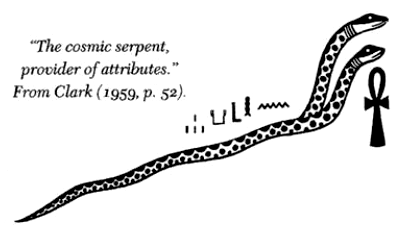
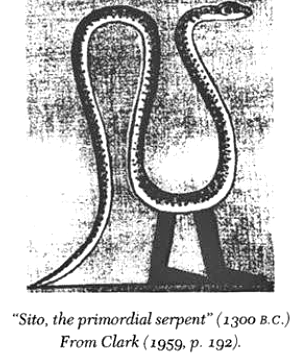

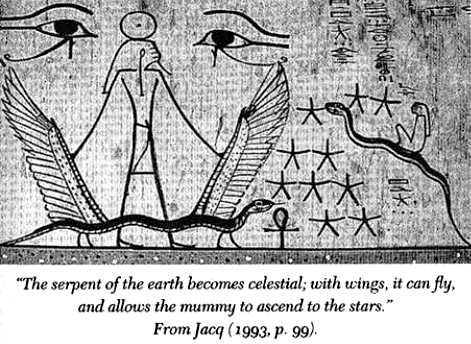
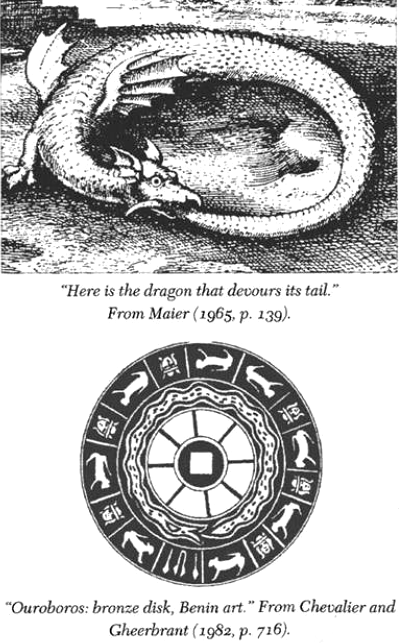
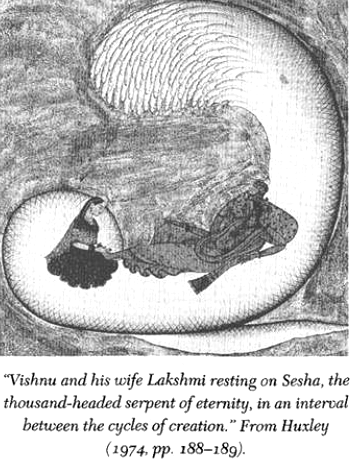
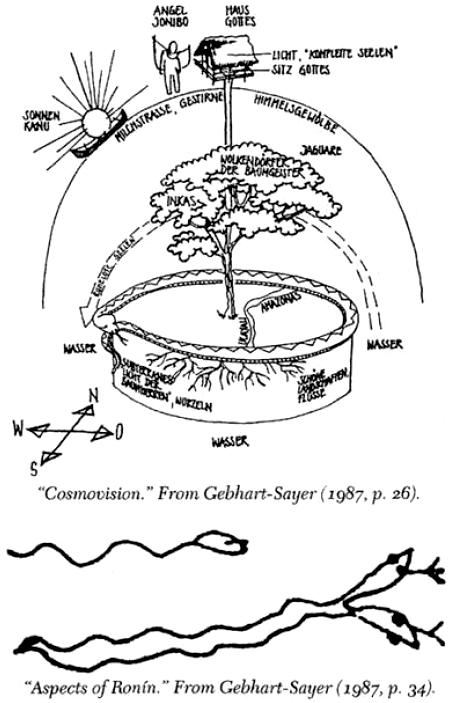
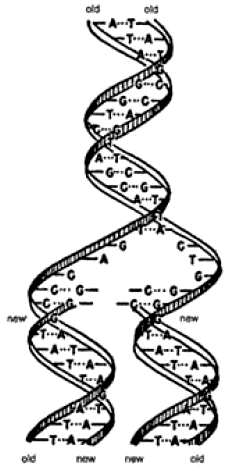

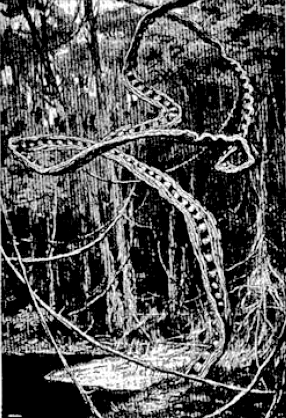
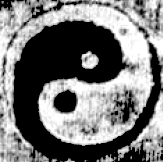
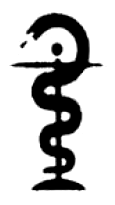
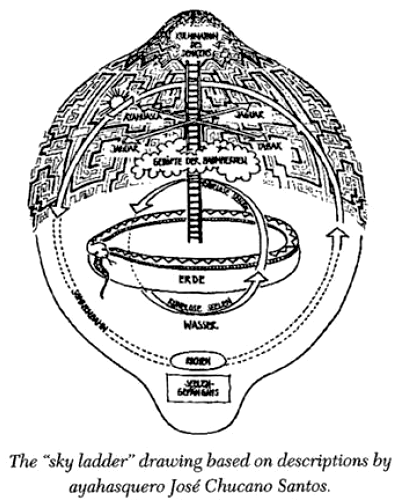
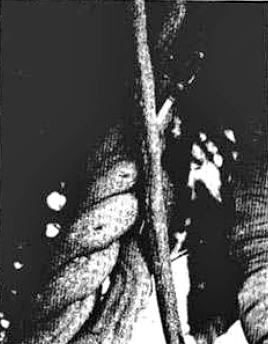
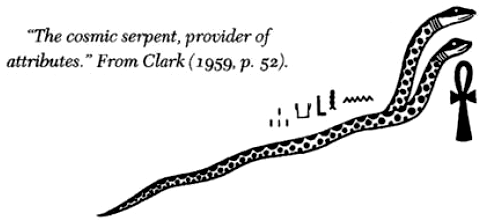
 )
) )
) )
) )
) ),
),
 )
)